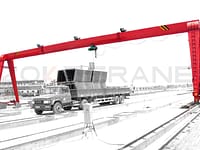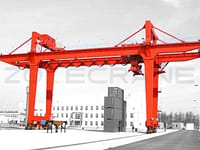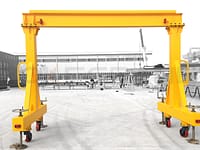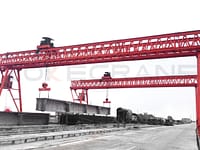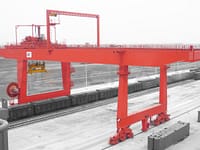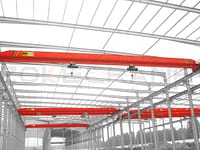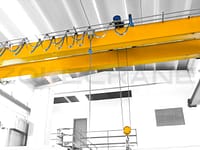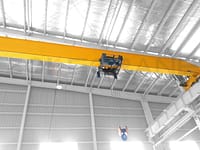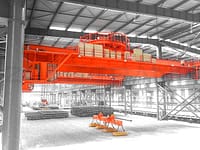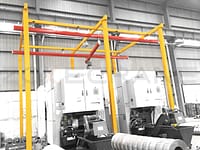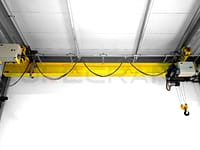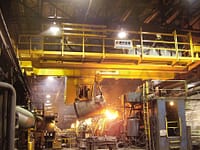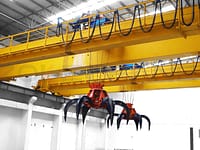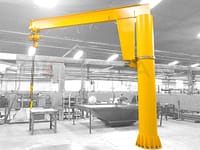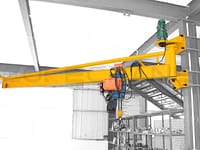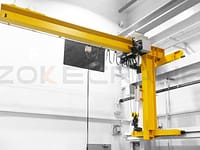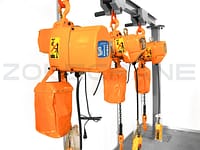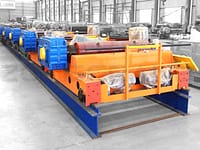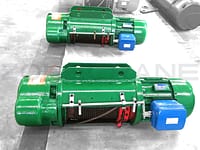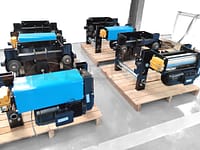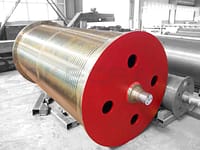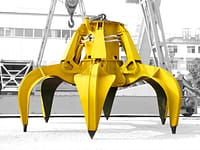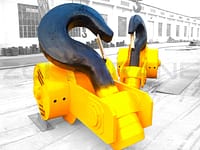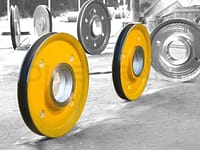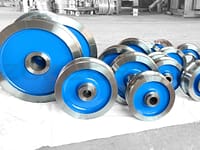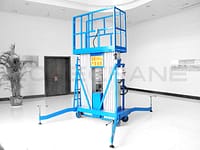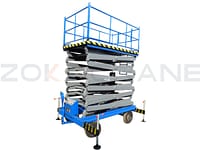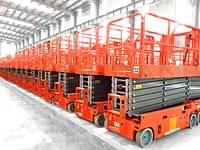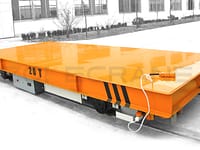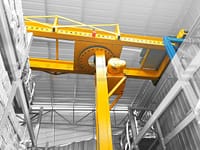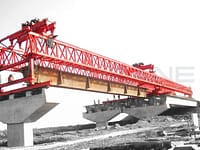What is a hoist?
A hoist is defined by its lifting medium, power and suspension device.
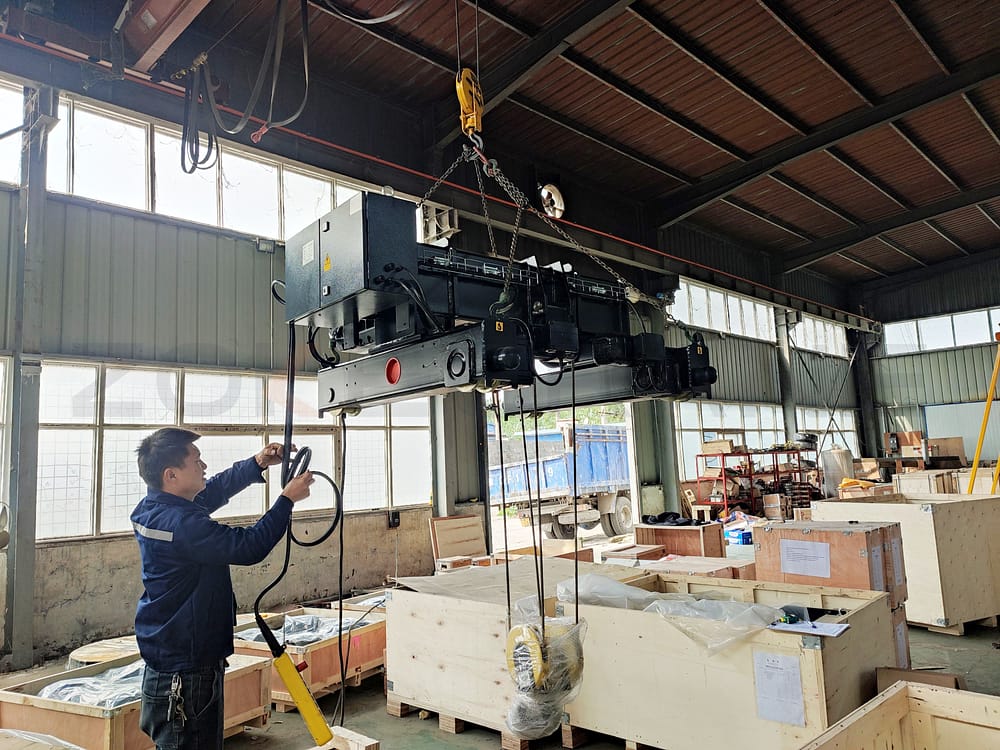
Lifting medium:The lifting medium is a flexible material that connects the hook to the top of the hoist. It can be rope, metal cable, welded chain or roller load chain. A welded anchor chain is like an anchor chain, a series of identical metal rings that are joined together to form a line. Like a bicycle chain, a roller load chain is made of alternating roller links and pin links that form a line that easily engages with a toothed sprocket.
Power:Hoists can be manually, electrically or pneumatically driven. Manual hoists use pulleys to increase the pulling power of the operator. You can also use electric or air power to drive the motor in the hoist. Plants equipped with many pneumatic tools may find pneumatics more convenient.
Suspension:The method of suspension of a hoist depends on how it is used. When you only need to move a load vertically upwards (e.g. from a truck to a trailer), a hoist fixed to a hook is a simple solution. Meanwhile, a hoist bolted to a crossbar will handle heavier loads. The hoist can be mounted to a trolley running along a beam or rail, thus enabling you to then lift the entire facility.
What is an overhead crane?
A bridge crane is a lifting device that is erected across workshops, warehouses and yards to lift materials. It is shaped like a bridge because its ends are situated on tall concrete columns or metal supports. Bridge crane bridge along the track laid on both sides of the elevated longitudinal running, can make full use of the space under the bridge lifting materials, not hindered by the ground equipment. It is the most widely used, the largest number of a lifting machine
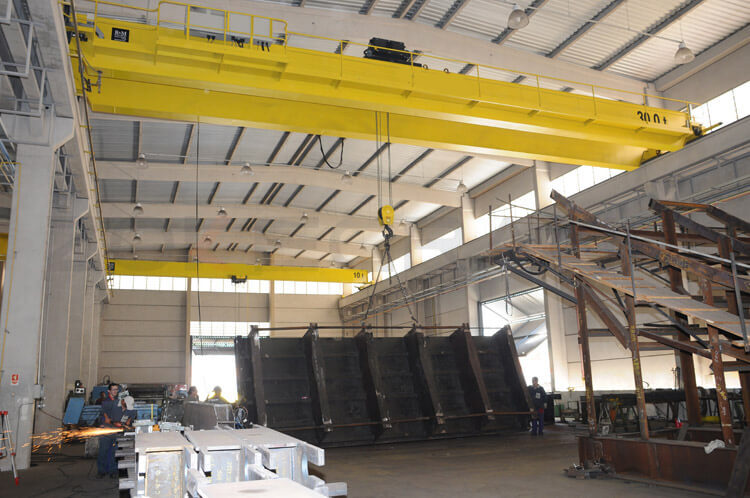
Bridge crane is an important tool and equipment for modern industrial production and lifting transportation to achieve mechanization and automation of the production process. So the bridge crane in indoor and outdoor industrial and mining enterprises, iron and steel chemical industry, railroad transportation, port terminals and logistics turnover and other departments and places are widely used.
What is difference between crane and hoist?
Hoists and cranes are both machines that help move and lift heavy loads on the job site, but they have many fundamental differences in their design and use.
The hoist can move heavy objects up and down. Elevators are probably the best known hoists. Elevators are ideal for moving loads vertically, but cannot move loads in other directions (a function different from that of a crane). On the other hand, cranes can perform two- or three-dimensional movements. Overhead cranes are suspended from beams or moved along rails. Just as cement is an integral part of concrete, the hoist is the central part of the overhead crane. In essence, the crane is moving the hoist.
A crane is a multi-action lifting machine that lifts vertically and moves heavy objects horizontally within a certain range.
Crane on a special lifting mechanism, lifting mechanism in the beam on the left and right movement commonly known as trolley, the beam travels on a rail mechanism called a large car, electric hoist is only in the I-beam or crane up and down on the run, can not achieve front and rear movement.
The difference between the crane and the electric hoist is that "the former is a machine, while the latter is a mechanism", the electric hoist is the "lifting mechanism" in the crane.
The electric hoist is a form of lifting mechanism of the crane, which can also be called a small crane.
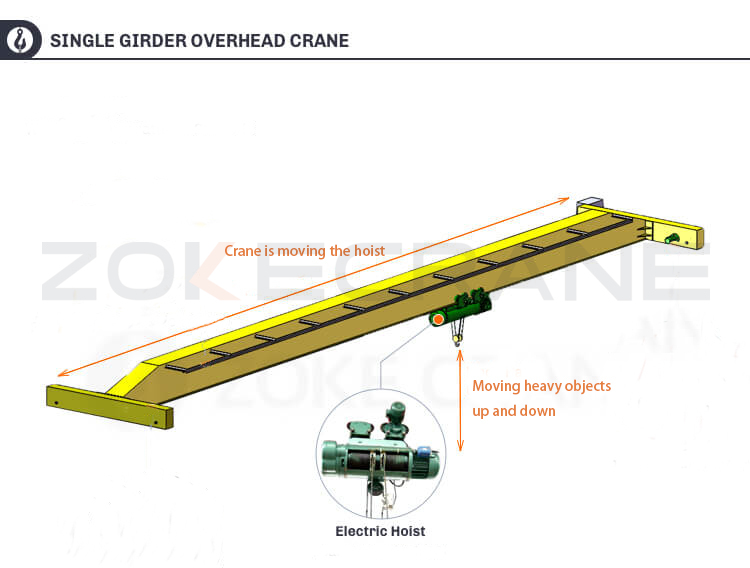
Cranes,Electric hoists,Lifts Differences:
Different Effect
1. Cranes are mainly used for lifting and transporting at any angle between short distances.
2. Electric hoists are mainly used for vertical lifting up and down. If you add a sports car you can move from side to side.
3. Lifts are mainly used for the lifting of lighter equipment or people. Generally it can only be moved up and down.
Different application scenarios
1. Crane: Multi-action lifting machinery used for vertical lifting and horizontal handling of heavy loads in the large construction industry.
2. Electric hoists: lifting equipment used in industrial and mining enterprises, warehouses, docks and other places.
3. Lifts: Lifts are usually used for rescue and renovation.
Different features
1. crane: its driving cab and lifting control room into one, is the evolution of the crawler crane (crawler crane), the walking mechanism of the crawler and walking support part into a chassis with tyres, to overcome the crawler crane (crawler crane) crawler plate on the road to cause damage to the disadvantages of the material handling machinery.
2. Electric hoist: large size in terms of length, large size in terms of width, crude and stupid structure, low mechanical efficiency, more difficult to process, etc.
3. Lift: using high strength and high quality aluminium alloy material, it has the advantages of beautiful shape, small volume, light weight, smooth lifting and lowering, safe and reliable. It is light in appearance and can play the highest lifting capacity in a very small space. The column lifting system has the characteristics of large load capacity, solidity, large platform area and easy implementation.
We are professional manufacturer in hoist, crane and crane spares, if there is any new question, welcome contact us freely, engineers are online 24 hours a day to answer your questions
